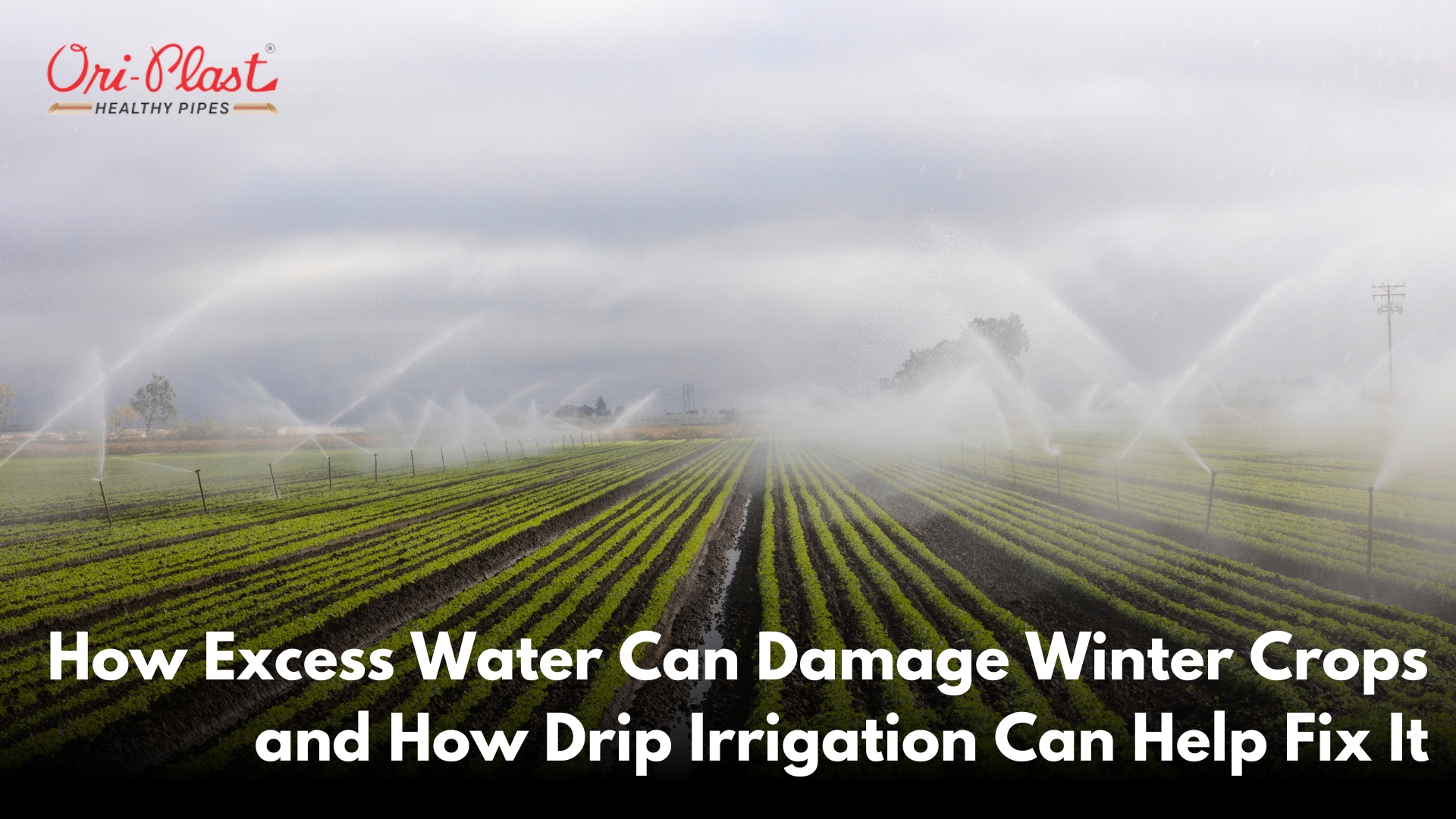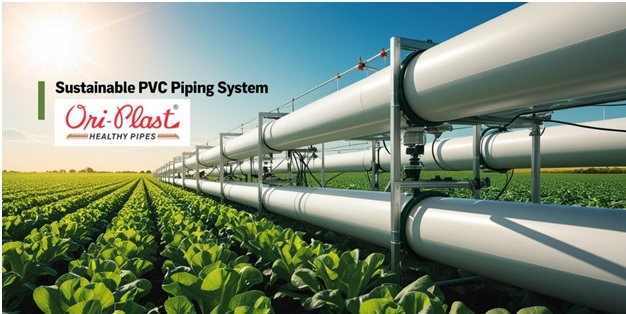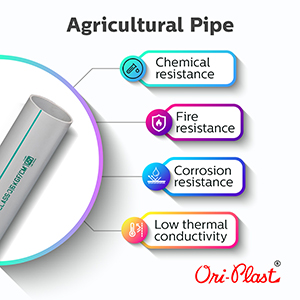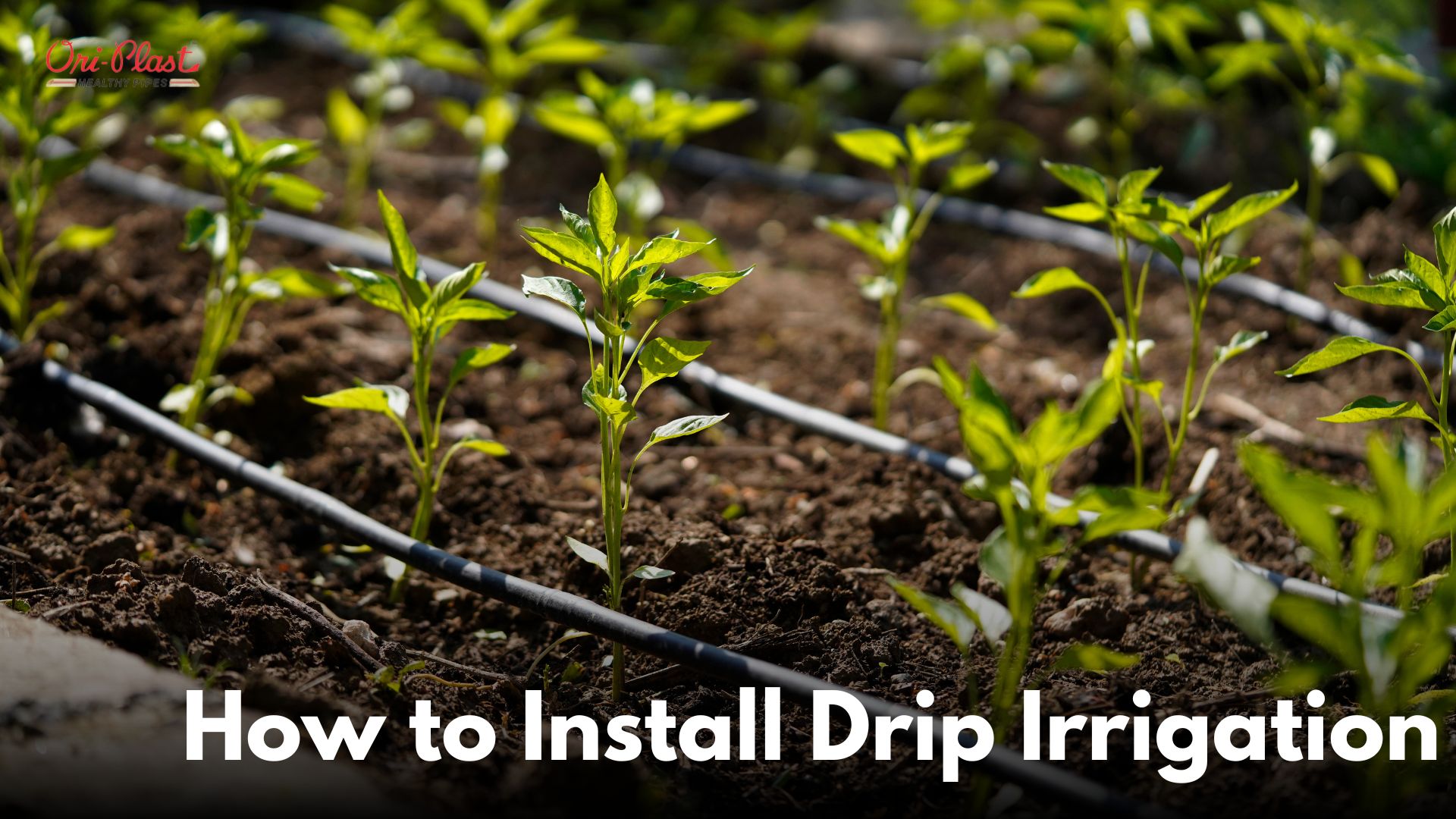Winter crops are crucial for farmers, providing a reliable source of food and income. However, managing water during the colder months can be tricky. Too much water can damage crops, leading to lower yields and financial losses. This is where drip irrigation comes in—a simple yet effective solution to manage water efficiently.
What Happens When Winter Crops Get Too Much Water?
Excess water might sound like a good thing, but it’s a disaster waiting to happen for winter crops. When fields get flooded or overwatered, plants struggle to survive. Here’s what goes wrong:
- Root Damage: Waterlogged soil suffocates plant roots. Without enough oxygen, roots can’t absorb nutrients, weakening the plants.
- Fungal Diseases: Wet conditions encourage fungal growth, like root rot or leaf blight, which can destroy crops.
- Nutrient Loss: Overwatering washes away essential nutrients from the soil, leaving plants starved.
- Slow Growth: Waterlogged fields stay colder, which slows down plant growth.
The result? Poor-quality produce, stunted growth, or even complete crop failure.
Why Is Excess Water a Bigger Problem in Winter?
Winter brings unique challenges when it comes to water management. Here’s why:
- Seasonal Rains: In many regions, winter comes with unpredictable rainfall. A sudden downpour can easily flood fields.
- Frozen Soil: When the ground is frozen, water doesn’t drain properly, leading to puddling and saturation.
- Lower Evaporation: Cold weather means less water evaporates, so fields stay wet for longer periods.
These factors make it even harder for farmers to control moisture levels, increasing the risk of water damage.
Which Crops Are Most Affected by Overwatering in Winter?
Not all crops react the same way to excess water. Some are more sensitive to waterlogging than others. Here are the winter crops that often suffer:
- Wheat: Overwatering reduces tillering (the growth of side shoots), directly affecting yields.
- Barley: Excess water can cause diseases like scald and root rot.
- Carrots and Potatoes: These root crops rot quickly in soggy soil.
- Brassicas (like cabbage and cauliflower): They’re prone to fungal infections when overwatered.
Knowing which crops are at risk helps farmers take preventive steps.
Where Does Drip Irrigation Fit In?
Drip irrigation is a water-saving technique that delivers water directly to the roots of plants through a network of pipes and emitters. Unlike traditional irrigation methods, it provides precise control over water distribution. But why is it perfect for tackling excess water problems? Let’s find out.
Why Is Drip Irrigation the Solution for Water Management?
Drip irrigation isn’t just about saving water; it’s about managing it smartly. Here’s why it works so well:
- Precision Watering: It delivers the right amount of water exactly where it’s needed, reducing wastage.
- Improved Drainage: By controlling water flow, drip systems prevent fields from becoming waterlogged.
- Disease Control: Keeping water off leaves and stems minimizes the risk of fungal infections.
- Nutrient Retention: With less water runoff, essential nutrients stay in the soil where plants can use them.
These benefits make drip irrigation an ideal solution for preventing winter crop damage.
How to Set Up a Drip Irrigation System?
Setting up a drip irrigation system might sound complicated, but it’s quite straightforward if you follow these steps:
- Plan Your Layout: Decide where to place the pipes and emitters based on your crop rows and spacing.
- Choose the Right Equipment: Select pipes, filters, and emitters suitable for your field size and crop type.
- Install the Main Line: Lay the main pipe along the field, connecting it to a water source.
- Add Lateral Lines: Attach smaller pipes (lateral lines) to the main line, running them along crop rows.
- Place Emitters: Install emitters near the base of each plant to ensure water reaches the roots.
- Test the System: Run water through the system to check for leaks or clogs.
With proper installation, your drip irrigation system will run efficiently, saving water and protecting your crops.
When Should You Use Drip Irrigation for Winter Crops?
Timing is everything when it comes to irrigation. Here’s when to rely on your drip system:
- After Rainfall: Use drip irrigation to balance moisture levels in the soil after heavy rains.
- During Dry Spells: Even in winter, crops need water. Drip systems can provide just enough to keep them healthy.
- At Critical Growth Stages: Crops like wheat need consistent moisture during germination and tillering.
By monitoring soil moisture levels and using drip irrigation strategically, you can avoid overwatering.
What Are the Costs and Benefits of Drip Irrigation?
Investing in drip irrigation requires some upfront costs, but the long-term benefits far outweigh them. Here’s a breakdown:
- Costs:
- Equipment (pipes, emitters, filters, etc.)
- Installation (can be DIY or professional)
- Maintenance (cleaning filters and repairing leaks)
- Benefits:
- Higher crop yields and better quality
- Reduced water bills and labor costs
- Lower risk of crop diseases and nutrient loss
For most farmers, the return on investment is well worth it.
Who Can Benefit Most from Drip Irrigation?
Drip irrigation is a game-changer for farmers facing water challenges. It’s especially useful for:
- Small-Scale Farmers: Managing water efficiently can make a big difference in yields and profits.
- Large-Scale Farms: Automation options make it easier to irrigate vast fields consistently.
- Organic Growers: Precise watering helps maintain soil health and prevent runoff.
No matter the size of your farm, drip irrigation can help you tackle water-related problems.
How to Maintain Your Drip Irrigation System?
Like any tool, a drip irrigation system needs regular maintenance to work efficiently. Here’s how to keep it in top shape:
- Check for Clogs: Clean emitters and filters regularly to prevent blockages.
- Inspect for Leaks: Look for cracks or holes in the pipes and repair them promptly.
- Flush the System: Run clean water through the pipes to remove debris and sediment buildup.
- Store Properly: During the off-season, disconnect and store pipes in a dry place to prevent damage.
A well-maintained system lasts longer and saves more water.
What Are the Environmental Benefits of Drip Irrigation?
Drip irrigation isn’t just good for crops—it’s good for the planet too. Here’s how:
- Water Conservation: By minimizing water wastage, drip systems help preserve freshwater resources.
- Reduced Pollution: Less runoff means fewer fertilizers and chemicals end up in nearby water bodies.
- Lower Carbon Footprint: Efficient water use reduces the need for energy-intensive pumps.
Using drip irrigation is a sustainable choice for modern farming.
Conclusion: Drip Irrigation is a Winter Farming Essential
Excess water can wreak havoc on winter crops, but it doesn’t have to. With drip irrigation, farmers can control water levels precisely, protecting their crops and improving yields. It’s a smart, sustainable solution that benefits both the farmer and the environment.
By understanding the problems caused by overwatering and adopting drip irrigation, you can ensure a successful winter harvest. So, why wait? Start planning your drip irrigation system today and see the difference it makes!




